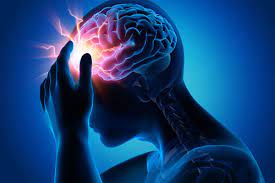Introduction
Stroke remains one of the leading causes of disability worldwide, leaving many survivors with long-term physical and cognitive impairments. Traditional rehabilitation methods have offered varying degrees of success. But recent advancements suggest that Mild Hyperbaric Oxygen Therapy (mHBOT) could be a game-changer in post-stroke recovery. This blog delves into how mHBOT is emerging as a breakthrough therapy for stroke survivors. Potentially transforming rehabilitation and recovery processes.
Understanding Stroke and Its Aftermath
A stroke occurs when the blood supply to part of the brain is interrupted or reduced. Preventing brain tissue from getting oxygen and nutrients. This can result in significant damage, affecting a person’s ability to move, speak, and perform everyday tasks. Recovery from a stroke is often a long and challenging journey. Involving various therapies to regain lost skills and adapt to new limitations.
What is Mild Hyperbaric Oxygen Therapy?
mHBOT is a medical treatment where patients breathe pure oxygen in a pressurized chamber at slightly higher than atmospheric pressures. It’s a gentler version of traditional hyperbaric oxygen therapy and is known for its healing and regenerative properties. Especially in wound care and treating decompression sickness.
The Role of Hyperbaric Oxygen Therapy in Stroke Recovery
mHBOT's potential in stroke recovery lies in its ability to enhance the oxygenation of brain tissues, even those affected by the stroke. Increased oxygen levels can lead to improved brain function, potentially aiding in the recovery of impaired neurological functions. Furthermore this therapy could promote healing in damaged brain tissues, reduce inflammation, and enhance the overall recovery process.
Scientific Basis and Research Findings
Several studies have explored the effects of mHBOT on stroke recovery, with encouraging results. Research indicates that patients undergoing mHBOT show improvements in motor function, speech, and cognitive abilities. Additionally enhanced oxygen delivery to the brain is believed to stimulate the recovery of damaged neural cells and foster the growth of new blood vessels. A process known as angiogenesis.
Case Studies and Patient Experiences with Hyperbaric Therapy
Real-world case studies and patient testimonials offer valuable insights into the impact of mHBOT on stroke recovery. Many stroke survivors who have undergone mHBOT report noticeable improvements in areas such as motor skills, speech, and cognitive function. These personal accounts, while not a substitute for scientific evidence, provide a glimpse into the potential life-changing benefits of mHBOT for individuals recovering from a stroke.
mHBOT as a Complementary Therapy
mHBOT is increasingly being recognized as a complementary therapy in post-stroke rehabilitation. When used in conjunction with traditional therapies like physical therapy, occupational therapy, and speech therapy, mHBOT can enhance overall recovery outcomes. Moreover this integrative approach maximizes the potential for stroke survivors to regain lost abilities and improve their quality of life.
Addressing the Challenges in Stroke Rehabilitation
Stroke rehabilitation can be a long and challenging process, with each patient's recovery journey being unique. MHBOT offers a new avenue for enhancing recovery, potentially shortening the rehabilitation timeline and improving outcomes. Additionally its ability to target neurological recovery at the cellular level makes it a valuable tool in addressing the complexities of stroke rehabilitation.
Safety and Accessibility of Hyperbaric Oxygen Therapy
Safety is a crucial consideration in any medical treatment. mHBOT is known for its safety and minimal side effects. Making it a viable option for many stroke survivors. However, it’s essential to undergo a thorough medical evaluation to ensure suitability for this therapy. Accessibility to mHBOT is also improving, with more clinics offering this treatment, thus making it more available to stroke patients worldwide.
The Future of mHBOT in Neurological Rehabilitation
Furthermore the promising results of mHBOT in post-stroke recovery point to a broader potential role in neurological rehabilitation. As research continues to evolve, mHBOT could become a standard part of treatment protocols for various neurological conditions, offering hope for improved recovery and a better quality of life for patients.
Integrating mHBOT into Healthcare Practices
The integration of mHBOT into healthcare practices requires awareness and education among medical professionals. Moreover with more research and clinical trials, mHBOT could be more widely recognized and recommended as a part of post-stroke rehabilitation programs. Indeed collaboration between neurologists, rehabilitation specialists, and hyperbaric medicine experts is crucial for optimizing patient care.
Patient Advocacy and Access to Hyperbaric Therapy
Patient advocacy plays a significant role in increasing access to innovative treatments like mHBOT. Stroke survivors and their families can benefit from being informed about the latest treatment options and advocating for access to such therapies. Additionally support groups and stroke recovery networks can be instrumental in sharing information and experiences related to mHBOT.
Cost Considerations and Insurance Coverage
The cost of mHBOT can be a barrier for some patients. While insurance coverage for mHBOT is variable and often depends on the condition being treated, increased recognition of its benefits in stroke recovery could lead to broader insurance coverage. Efforts to make mHBOT more affordable and accessible are essential for ensuring that more stroke survivors can benefit from this therapy.
Conclusion
Mild Hyperbaric Oxygen Therapy represents a significant breakthrough in the field of stroke recovery and rehabilitation. By enhancing brain oxygenation and promoting neurological healing, mHBOT offers new hope for stroke survivors to regain lost functions and improve their quality of life. As research progresses and awareness grows, mHBOT is poised to become an integral part of post-stroke recovery, changing the landscape of stroke rehabilitation and offering a brighter future for those affected by this life-altering event.
The journey towards recovery for stroke survivors is often arduous and complex, but with the advent of therapies like mHBOT, the path to regaining independence and functionality is becoming more promising. By embracing innovative treatments and integrating them into comprehensive rehabilitation strategies, the potential for recovery and improvement in the lives of stroke survivors is vastly expanding.








Leave a comment
This site is protected by hCaptcha and the hCaptcha Privacy Policy and Terms of Service apply.